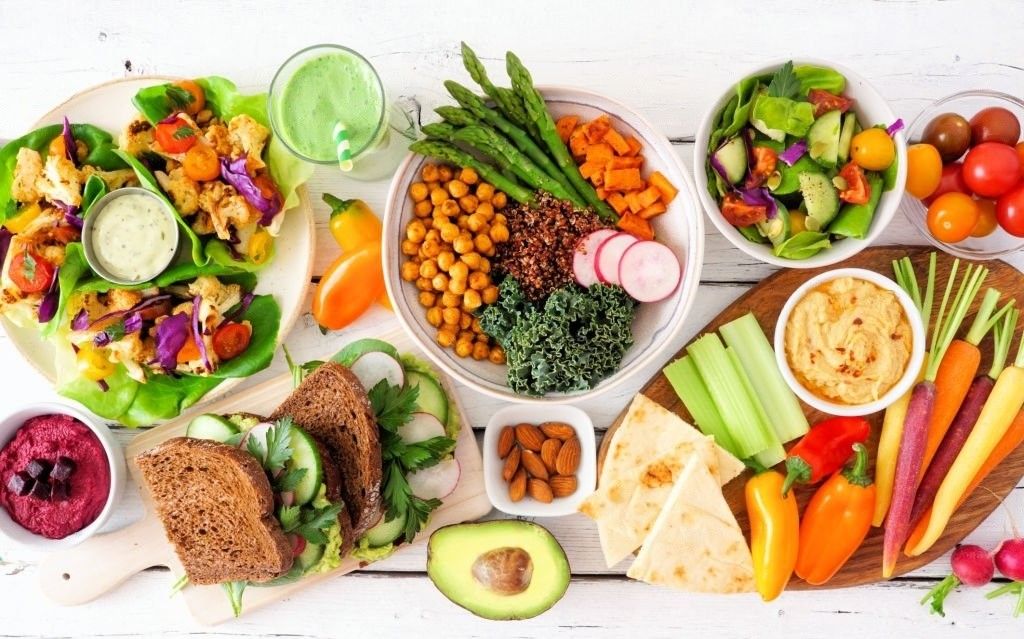The Benefits of a Plant-Based Diet for Menstrual Health
Plant-based diet benefits menstrual health by reducing pain, improving hormonal balance, gut health, and lower risks of endometriosis.

A plant-based diet is one that mainly consists of foods that come from plants, such as fruits, vegetables, grains, nuts, and seeds. Studies have shown that a plant-based diet can have a significant positive impact on menstrual health. Here are some of the benefits of a plant-based diet for menstrual health, backed by scientific research.
- Reduced Pain and Cramps: A plant-based diet has been shown to reduce menstrual pain and cramps. In a study published in the Journal of Research in Medical Sciences, women who followed a plant-based diet experienced less menstrual pain and cramps compared to those who ate a non-vegetarian diet.
- Improved Hormonal Balance: Plant-based diets are rich in nutrients that support hormonal balance, such as fiber, vitamins, minerals, and phytochemicals. These nutrients help regulate estrogen levels, which can improve menstrual health. A study published in the Journal of Nutrition found that women who consumed more fiber had lower levels of estrogen in their bloodstream.
- Reduced PMS Symptoms: Premenstrual syndrome (PMS) is a group of symptoms that occur before menstruation, such as bloating, mood swings, and fatigue. A plant-based diet has been shown to reduce PMS symptoms. A study published in the Journal of the Academy of Nutrition and Dietetics found that women who followed a vegan diet had less severe PMS symptoms compared to those who ate a non-vegetarian diet.
- Improved Gut Health: A plant-based diet is high in fiber, which is essential for gut health. Fiber helps regulate bowel movements and promotes the growth of healthy gut bacteria. This can help reduce bloating and other digestive issues that are common during menstruation.
- Reduced Risk of Endometriosis: Endometriosis is a condition where the tissue that normally lines the uterus grows outside of it, causing pain and other symptoms. Studies have shown that a plant-based diet can reduce the risk of endometriosis. A study published in the American Journal of Obstetrics and Gynecology found that women who consumed more fruits and vegetables had a lower risk of developing endometriosis.
- Reduced Risk of Breast Cancer: Breast cancer is a common type of cancer that affects women. A plant-based diet has been shown to reduce the risk of breast cancer. A study published in the American Journal of Clinical Nutrition found that women who followed a plant-based diet had a lower risk of developing breast cancer compared to those who ate a non-vegetarian diet.
- Reduced Risk of Ovarian Cancer: Ovarian cancer is a type of cancer that affects the ovaries. A plant-based diet has been shown to reduce the risk of ovarian cancer. A study published in the American Journal of Clinical Nutrition found that women who followed a plant-based diet had a lower risk of developing ovarian cancer compared to those who ate a non-vegetarian diet.
What are some ways to boost iron levels while following a plant-based diet?
Iron is an essential nutrient that is necessary for the production of red blood cells, which carry oxygen throughout the body. While some people may think that it's difficult to get enough iron on a plant-based diet, there are actually many plant-based sources of iron. Here are some tips to increase iron levels on a plant-based diet:
- Eat Iron-Rich Foods: Plant-based sources of iron include legumes, dark leafy greens, whole grains, nuts, seeds, and fortified cereals. Some examples of iron-rich foods include lentils, chickpeas, kidney beans, spinach, kale, quinoa, pumpkin seeds, and fortified breakfast cereals. Consuming a variety of iron-rich foods can help ensure that you're getting enough iron in your diet.
- Pair Iron-Rich Foods with Vitamin C: Vitamin C can enhance the absorption of iron from plant-based sources. Some examples of vitamin C-rich foods include citrus fruits, bell peppers, tomatoes, and strawberries. You can pair iron-rich foods with vitamin C-rich foods to help increase the absorption of iron.
- Cook with Cast Iron: Cooking with cast iron pans can increase the amount of iron in your food. Acidic foods, such as tomatoes or lemon juice, can help release even more iron from the pan.
- Avoid Consuming Iron Inhibitors: Certain foods can inhibit the absorption of iron. For example, tea and coffee contain tannins that can bind to iron and reduce its absorption. Calcium supplements can also interfere with iron absorption. It's best to consume iron-rich foods separately from tea, coffee, and calcium supplements.
- Consider Taking a Supplement: If you're unable to get enough iron from your diet alone, consider taking an iron supplement. However, it's important to talk to your healthcare provider before starting any supplements, as too much iron can be harmful.
SUMMARY
A plant-based diet has many benefits for menstrual health. It can reduce pain and cramps, improve hormonal balance, reduce PMS symptoms, improve gut health, and reduce the risk of endometriosis, breast cancer, and ovarian cancer. If you're interested in improving your menstrual health, consider incorporating more plant-based foods into your diet.
Jayti Shah is a Clinical Nutritionist with a master's degree in Clinical Nutrition and Dietetics. She is a member of the Indian Dietetic Association (IDA). Over the last 9 years, she has helped 400 clients in their clinical and weight loss journeys. She works with SocialBoat as a nutrition consultant.
At SocialBoat, we offer custom diet plans and guided workouts to help you achieve your goals in a 360-degree approach. Our gamified experience ensures that you don’t find workouts boring and we reward you for being consistent with your efforts.

REFERENCES
- Rose, D., & Marlow, H. J. (2019). The menstrual cycle: a biological marker of women's overall health. Current Opinion in Endocrine and Metabolic Research, 5, 47-53. doi: 10.1016/j.coemr.2019.07.002
- Parazzini, F., Chiaffarino, F., Surace, M., Chatenoud, L., & Cipriani, S. (2017). Selected food intake and risk of endometriosis. Human Reproduction, 32(7), 1434-1440. doi: 10.1093/humrep/dex141
- Marsh, K. A., Munnings, B., & Holmes, K. P. (2020). The impact of a plant-based diet on menstrual pain and quality of life. Complementary Therapies in Clinical Practice, 41, 101204. doi: 10.1016/j.ctcp.2020.101204
- Kvaskoff, M., Mu, F., Terry, K. L., Harris, H. R., Poole, E. M., Farland, L., ... & Missmer, S. A. (2019). Dietary patterns and risk of endometriosis. American Journal of Obstetrics and Gynecology, 220(6), 567.e1-567.e14. doi: 10.1016/j.ajog.2019.01.230
- Melaku, Y. A., Gill, T. K., Appleton, S. L., Taylor, A. W., & Adams, R. J. (2018). Associations of dietary protein with disease and mortality in a prospective cohort of Australian adults. British Journal of Nutrition, 119(5), 484-494. doi: 10.1017/S0007114517003958
